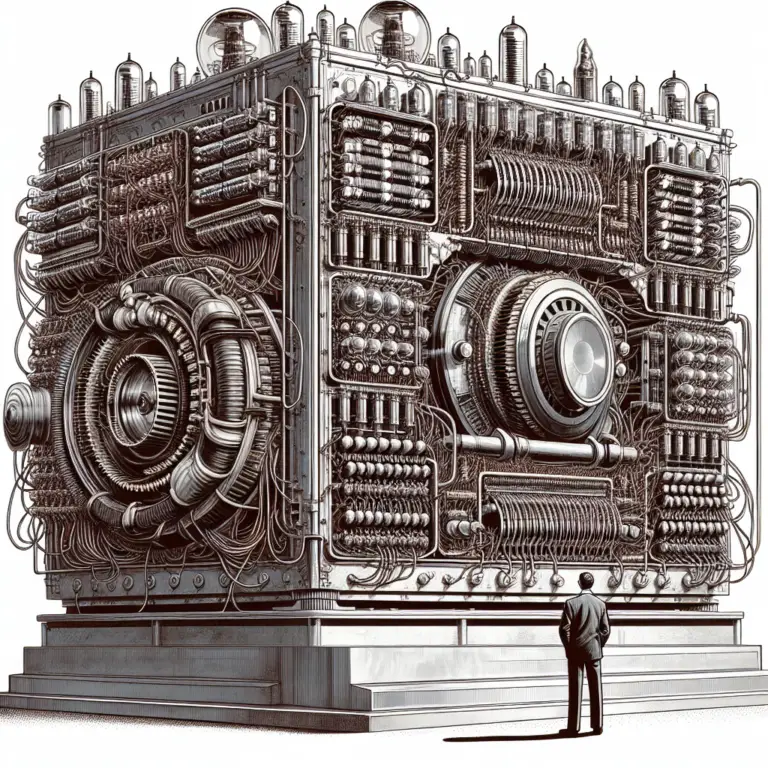A Journey Through Time: Celebrating the 80th Anniversary of Colossus, the First Digital Computer
As we mark the 80th anniversary of the groundbreaking Colossus, we pay homage to the world’s first digital computer, a marvel that revolutionized cryptography during World War 2 and laid the foundation for the history of computing as we know it.
80th Anniversary of Colossus: The Dawn of Digital Computing
The United Kingdom’s Government Communications Headquarters (GCHQ) recently celebrated the 80th anniversary of Colossus, often hailed as the first digital computer. This monumental machine played a pivotal role during World War 2, where its capabilities were so advanced and significant that its existence was kept under wraps for 56 years. In a remarkable turn of events, detailed information and images of Colossus have now been released, shedding light on a piece of history that was once shrouded in secrecy.
The Design and Function of Colossus: A World War 2 Cryptography Marvel
Colossus was not merely a singular computer but an impressive array of computers designed with a specific purpose during World War 2: to decode teleprinter messages. This groundbreaking technology was digital, programmable, and electronic, setting a precedent for future computing innovations. However, unlike modern computers, Colossus was not capable of storing programs internally. Instead, programming had to be manually configured using physical switches and plugs.
- Ability to process encrypted messages at an astonishing rate
- Read paper tape at a speed of 5000 characters per second
Technical Specifications of Colossus: Pioneering the Future of Data Storage
The technical prowess of Colossus was underscored by its use of neon gas valves and thyratron rings, which were employed for the purpose of data storage. Each neon gas valve had the capacity to store a single bit of information. These components were arranged meticulously to emulate the wheels of the Lorenz encryption machine, which Colossus was designed to decipher. Once the pattern of ones and zeros on the wheels was determined, this data could be stored in the thyratron rings, enabling the machine to configure the correct settings for decrypting multiple messages.
In a humorous nod to modern technology, the storage capabilities of Colossus might seem minuscule when compared to today’s solid-state drives (SSDs). Yet, for its time, the technology was nothing short of revolutionary.
| Colossus Storage | 1 bit per neon gas valve |
| Modern SSD Storage | Up to several terabytes |
Logic Gates and Vacuum Tubes: The Building Blocks of Colossus
Logic gates are fundamental components of computers, responsible for performing the binary operations that underpin all computer processing. In the case of Colossus, these critical functions were not executed by electronic circuits as they are today, but rather through the use of vacuum tubes. These tubes allowed an electrical current to flow from a cathode to an anode within a vacuum, a technology that was state-of-the-art at the time.
Colossus incorporated an impressive total of 2,500 vacuum tubes in its design. These tubes were not only pivotal in the operation of Colossus but were also widely used in other technologies of the era, including radio, television, radar, and sound recording systems. The use of vacuum tubes was a hallmark of technological advancement during the period and played a significant role in the development of early computing.
Colossus’s Role in D-Day: Deciphering the Path to Victory
Colossus’s strategic value was not limited to decoding encrypted messages; it also played a crucial role in one of the most significant military operations of World War 2: D-Day. The intelligence provided by Colossus was instrumental in confirming that Operation Overlord, the code name for the Battle of Normandy, was still in motion. This information helped to solidify the Allies’ deception strategy, which successfully convinced Adolf Hitler that the invasion would occur at Pas De Calais, rather than the actual location of Normandy.
Reflecting on the Legacy of Colossus: From World War to Modern Computing
As we reflect on the legacy of Colossus, it’s clear that this towering two-meter tall behemoth, programmed with switches and neon gas and fed instructions with paper, stands in stark contrast to the sleek, high-performance computing devices of today. The grandfather of programmable digital computers laid the groundwork for the technological advancements that now allow users to focus on optimizing performance for entertainment and other sophisticated applications. The journey from Colossus to contemporary computers is a testament to human ingenuity and the relentless pursuit of technological progress.
In conclusion, the 80th anniversary of Colossus is not just a celebration of a single machine but a recognition of a pivotal moment in the history of technology. It reminds us of the incredible strides we have made and inspires us to continue pushing the boundaries of what is possible.












